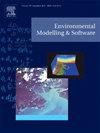FlorID -一个全国性的植物识别服务,从照片和栖息地信息
IF 4.8
2区 环境科学与生态学
Q1 COMPUTER SCIENCE, INTERDISCIPLINARY APPLICATIONS
引用次数: 0
摘要
公民科学已经成为生物多样性监测的关键,但关键取决于精确的质量控制,这种控制是可扩展的,并且适合重点地区。我们开发了FlorID,这是一个免费使用的识别服务,可以识别瑞士所有本地和许多非本地植物。FlorID可以识别3000个物种,使用在150万张照片上训练的视觉转换器,以及在6.7万次发生观测和20个高分辨率环境变量上训练的多层感知器的生态预测。嵌入在一个免费使用的应用程序编程接口,FlorID可以直接访问,通过网络服务,并通过FlorApp智能手机应用程序。如果有多个图像和时空位置可用,FlorID可以正确识别93%的现场观测结果,前5名的准确率为99%。生态预测提高了识别的成功率,特别是对具有不同分布的本地物种。通过评估外观和细粒度生态的信息,FlorID是针对不同分类群或地区的类似解决方案的蓝图,也是自动化社区清单等开发的基础。本文章由计算机程序翻译,如有差异,请以英文原文为准。

FlorID – A nationwide identification service for plants from photos and habitat information
Citizen science has become key to biodiversity monitoring but critically depends on accurate quality control that is scalable and tailored to the focal region. We developed FlorID, a free-to-use identification service for all native and many non-native plants of Switzerland. FlorID can identify >3000 species, using vision transformers trained on 1.5M photos, and ecological predictions from multilayer perceptrons, trained on 6.7M occurrence observations and 20 high-resolution environmental variables. Embedded in a free-to-use application programming interface, FlorID can be accessed directly, via webservice, and via FlorApp smartphone application. If multiple images and spatiotemporal location are available, FlorID correctly identifies 93% of field observations and has a top-5 accuracy of 99%. Ecological predictions boost identification success especially for native species with distinct distributions. By evaluating information on appearance and fine-grained ecology, FlorID is a blueprint for similar solutions targeting different taxa or regions, and a basis for developments like automated community inventories.
求助全文
通过发布文献求助,成功后即可免费获取论文全文。
去求助
来源期刊

Environmental Modelling & Software
工程技术-工程:环境
CiteScore
9.30
自引率
8.20%
发文量
241
审稿时长
60 days
期刊介绍:
Environmental Modelling & Software publishes contributions, in the form of research articles, reviews and short communications, on recent advances in environmental modelling and/or software. The aim is to improve our capacity to represent, understand, predict or manage the behaviour of environmental systems at all practical scales, and to communicate those improvements to a wide scientific and professional audience.
 求助内容:
求助内容: 应助结果提醒方式:
应助结果提醒方式:


